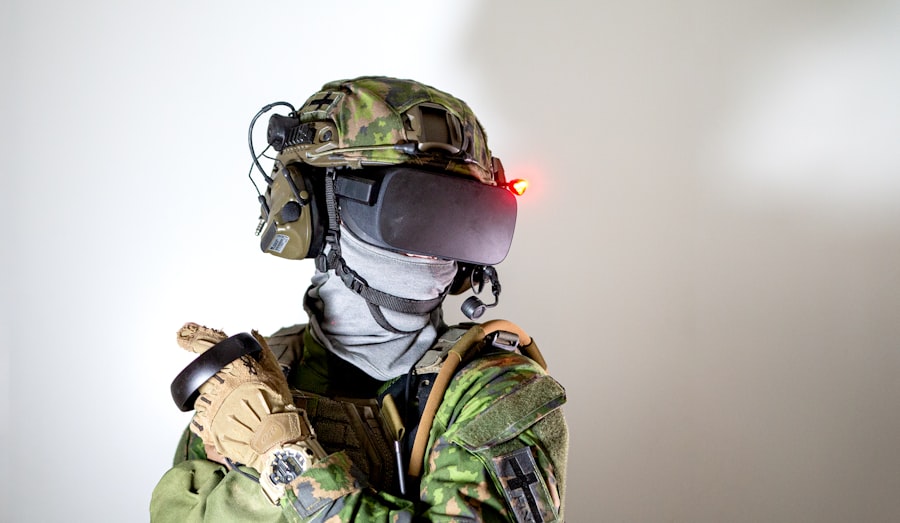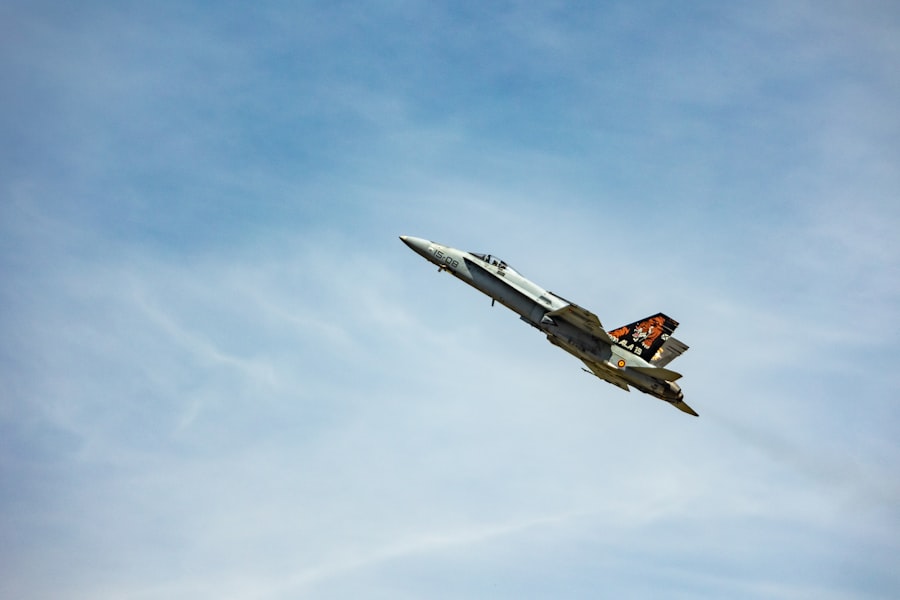Reverse engineering has emerged as a pivotal practice in the realm of military technology, serving as a bridge between innovation and strategic advantage. This process involves the deconstruction of existing technologies to understand their components, functionalities, and underlying principles.
As nations strive to maintain technological superiority, reverse engineering becomes an essential strategy for both offensive and defensive operations. The significance of reverse engineering in military tech extends beyond mere replication. It encompasses a comprehensive analysis that can lead to the improvement of existing systems or the creation of entirely new solutions.
By dissecting advanced weaponry, communication systems, and surveillance technologies, military engineers and analysts can glean valuable information that informs future innovations. This practice not only aids in understanding enemy capabilities but also fosters a culture of continuous improvement within a nation’s own military apparatus.
Key Takeaways
- Reverse engineering in military technology involves the process of disassembling and analyzing existing military equipment to understand its design and functionality.
- The history of reverse engineering in military technology dates back to ancient times, with examples such as the replication of Greek fire by the Byzantine Empire.
- Advancements in reverse engineering military tech have been driven by technological innovations, such as 3D scanning and printing, which have enabled more accurate reproduction of complex military equipment.
- Reverse engineering has significant implications for national security, as it can lead to the unauthorized replication of sensitive military technology by foreign entities.
- Ethical and legal considerations in reverse engineering military tech include issues of intellectual property rights, export control regulations, and the potential for misuse of replicated military equipment.
History of Reverse Engineering in Military Technology
The roots of reverse engineering in military technology can be traced back to the early 20th century, during periods of intense global conflict. World War I and World War II saw nations scrambling to outpace one another in technological advancements. The capture of enemy equipment often led to reverse engineering efforts aimed at deciphering the secrets behind superior designs.
For instance, the analysis of German aircraft during World War I provided the Allies with insights that significantly improved their own aviation technologies. As the Cold War unfolded, reverse engineering took on new dimensions. The United States and the Soviet Union engaged in a technological arms race, with each side keenly aware that understanding the other’s capabilities could provide a strategic edge.
The U.S. military’s efforts to reverse engineer Soviet missile technology exemplified this trend. By analyzing captured missiles and related systems, American engineers were able to develop countermeasures and enhance their own missile defense systems, thereby altering the balance of power in the nuclear age.
Advancements in Reverse Engineering Military Tech

In recent years, advancements in technology have revolutionized the field of reverse engineering within military contexts. The integration of sophisticated software tools and high-resolution imaging techniques has made it possible to analyze complex systems with unprecedented precision. For example, 3D scanning and modeling technologies allow engineers to create detailed digital replicas of physical objects, facilitating a deeper understanding of their design and functionality.
This capability has proven invaluable in assessing everything from weapon systems to electronic devices. Moreover, artificial intelligence (AI) and machine learning have begun to play a significant role in reverse engineering efforts. These technologies can analyze vast amounts of data quickly, identifying patterns and anomalies that human analysts might overlook.
By leveraging AI, military organizations can streamline their reverse engineering processes, making them more efficient and effective. This not only accelerates the pace at which new insights can be gained but also enhances the overall quality of the analysis conducted.
Implications of Reverse Engineering for National Security
| Implications of Reverse Engineering for National Security |
|---|
| 1. Potential for weapon systems and military technology to be replicated by adversaries |
| 2. Risk of sensitive information and intellectual property being stolen |
| 3. Impact on economic competitiveness and innovation |
| 4. Challenges in maintaining technological superiority |
| 5. Need for robust cybersecurity measures to protect against reverse engineering attacks |
The implications of reverse engineering for national security are profound and multifaceted. On one hand, it serves as a vital tool for enhancing a nation’s defense capabilities by allowing for the rapid adaptation and improvement of existing technologies. By understanding enemy systems, military forces can develop countermeasures that neutralize potential threats.
This proactive approach to defense is essential in an era where technological advancements are occurring at an unprecedented pace. On the other hand, reverse engineering also raises concerns about espionage and intellectual property theft. Nations may engage in covert operations to acquire foreign technologies for reverse engineering purposes, leading to tensions between countries.
The potential for misinterpretation or misuse of acquired technologies further complicates the landscape of national security. As such, military leaders must navigate these challenges carefully, balancing the benefits of reverse engineering with the ethical and legal implications it entails.
Ethical and Legal Considerations in Reverse Engineering Military Tech
The practice of reverse engineering military technology is fraught with ethical and legal dilemmas that require careful consideration. One primary concern revolves around intellectual property rights. When a nation reverse engineers a foreign technology, it raises questions about ownership and the potential infringement on patents or copyrights.
This issue is particularly contentious in cases where proprietary technologies are involved, as companies invest significant resources into research and development. Additionally, ethical considerations extend to the potential consequences of reverse engineering efforts. The knowledge gained from such activities can lead to advancements that may be used for offensive purposes, potentially escalating conflicts or contributing to an arms race.
Military leaders must grapple with the moral implications of their actions, weighing the benefits of enhanced capabilities against the risks posed to global stability. Establishing clear guidelines and frameworks for responsible reverse engineering practices is essential to mitigate these concerns.
Economic Impact of Reverse Engineering Military Technology

The economic impact of reverse engineering military technology is significant and multifaceted. On one hand, successful reverse engineering initiatives can lead to cost savings by allowing nations to replicate or improve upon existing technologies without incurring the full expenses associated with original research and development. This can be particularly advantageous for countries with limited defense budgets, enabling them to enhance their military capabilities without overextending their financial resources.
Conversely, the practice can also have negative economic implications for companies involved in defense contracting. When governments engage in reverse engineering foreign technologies, it can undermine the competitive advantage held by domestic firms that invest heavily in innovation. This dynamic may lead to reduced incentives for private sector investment in research and development, ultimately stifling technological progress within the defense industry.
Policymakers must carefully consider these economic ramifications when formulating strategies related to reverse engineering.
International Relations and Reverse Engineering Military Tech
Reverse engineering military technology has far-reaching implications for international relations, often serving as both a catalyst for cooperation and a source of tension between nations. On one hand, collaborative efforts in reverse engineering can foster partnerships among allied countries seeking to enhance their collective defense capabilities. Joint projects that involve sharing knowledge and resources can lead to innovations that benefit all parties involved.
However, reverse engineering can also exacerbate rivalries between nations. When one country successfully reverse engineers a technology developed by another nation, it can lead to accusations of espionage and intellectual theft, straining diplomatic relations. The potential for misunderstandings or misinterpretations further complicates these dynamics, as nations may perceive reverse engineering efforts as hostile actions rather than legitimate attempts at self-improvement.
Navigating these complexities requires diplomatic finesse and a commitment to transparency among nations.
Challenges and Risks in Reverse Engineering Military Technology
Despite its potential benefits, reverse engineering military technology is fraught with challenges and risks that must be carefully managed. One significant challenge lies in the technical complexity of modern systems.
Engineers may encounter proprietary materials or advanced manufacturing techniques that hinder their ability to replicate or improve upon existing designs. Additionally, there are inherent risks associated with relying too heavily on reverse engineering as a strategy for technological advancement. Over-dependence on this practice may stifle original innovation within a nation’s defense sector, leading to a stagnation of creativity and progress.
Furthermore, there is always the risk that acquired technologies may not perform as expected when integrated into existing systems or may introduce unforeseen vulnerabilities that could be exploited by adversaries.
Future Trends in Reverse Engineering Military Tech
Looking ahead, several trends are likely to shape the future of reverse engineering in military technology. One prominent trend is the increasing integration of digital tools and simulations into the reverse engineering process. As virtual reality (VR) and augmented reality (AR) technologies continue to advance, they may provide new avenues for analyzing complex systems without the need for physical disassembly.
Moreover, as geopolitical tensions persist, nations may invest more heavily in developing indigenous capabilities through reverse engineering efforts. This could lead to a resurgence in domestic defense industries as countries seek to reduce reliance on foreign technologies while simultaneously enhancing their own technological prowess. The interplay between innovation and security will remain a central theme as nations navigate this evolving landscape.
Case Studies of Successful Reverse Engineering in Military Technology
Several notable case studies illustrate the successful application of reverse engineering in military technology. One prominent example is the U.S. military’s analysis of captured enemy equipment during conflicts such as the Gulf War.
By studying Iraqi weaponry and communication systems, American forces were able to develop effective countermeasures that significantly improved their operational effectiveness. Another compelling case involves China’s efforts to reverse engineer advanced fighter jets from various countries. By acquiring foreign aircraft through various means—ranging from espionage to legitimate purchases—China has been able to replicate key technologies and develop its own indigenous fighter jets that rival those produced by Western nations.
This case underscores both the potential benefits and risks associated with reverse engineering practices on a global scale.
The Role of Reverse Engineering in Shaping Military Technology
In conclusion, reverse engineering plays an indispensable role in shaping military technology across the globe. Its historical roots underscore its importance as a strategic tool for enhancing national defense capabilities while navigating complex ethical and legal landscapes. As advancements in technology continue to evolve, so too will the methods employed in reverse engineering efforts.
The implications for national security are profound; nations must balance the benefits gained from understanding adversaries’ technologies with the potential risks posed by espionage and intellectual property concerns. Ultimately, as countries strive for technological superiority in an increasingly competitive global environment, reverse engineering will remain a critical component of military strategy—one that shapes not only individual nations’ capabilities but also the broader dynamics of international relations.
In recent years, the field of military technology has seen significant advancements, some of which have been attributed to reverse engineering efforts. A fascinating article that delves into this topic can be found on XFile Findings, where it explores various cases of military technology that have been reverse engineered from unidentified aerial phenomena. For more insights, you can read the article here: XFile Findings.
WATCH THIS! 16,000 Vanished: The Deadly Secret of Alaska’s Dark Pyramid
